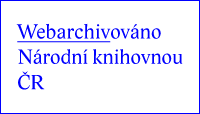Editorial 1/2025
Dear readers,
We are pleased to bring you the summer issue and hope you enjoy it. This issue features two peer-reviewed and three non-peer-reviewed articles, one book review, and regular Recommended Reading from the Library and Information Science Literature Library and New Library Science Publications from Abroad sections.
The two peer-reviewed articles both take us on a journey through history, each in its own way. The authors of the first article present the progress made in the development of tools for transcription of historical written heritage in the Czech Republic and Slovakia since 2020. They provide information on the latest Transkribus platform transcription models (SKRIPTOR project). Old and rare prints, manuscripts, and typescripts cannot usually be satisfactorily transcribed using optical character recognition (OCR) tools. To make the historical written heritage from digital repositories accessible, researchers are focusing their attention on transcription and machine learning using artificial intelligence. The procedures and experiments involved in creating models of historical manuscript documents, carried out by students as part of the Student Grant Competition project at the Silesian University in Opava, are of particular interest. After an introductory summary, the procedures for creating models for the automatic transcription of selected handwritten religious documents, handwritten samples from the second half of the 18th century to the first half of the 20th century, as well as a model for the transcription of Bohemian typewritten documents are described in detail. In all cases, the texts were of West Slavic origin.
The second article is the result of research into old publications on beekeeping in the historical collection of the National Library of the Czech Republic. It presents a carefully researched study on the development of beekeeping, also confirming the importance of the spread of printing, which enabled the gradual dissemination of scientific knowledge about improving the quality of beekeeping as an important economic and cultural factor. The author's work (thanks to the identification of provenance features) also contributed to a more comprehensive picture of the spread of this type of literature in various strata of society and in all types of libraries.
The following article presents the results of a survey that examined the digital skills of librarians. This interesting survey was conducted in the fall of 2023 and is unique in that it not only examined the actual state of our digital skills, but also how we assess ourselves in this area. The results of the survey, which focused on this integral part of our daily work, cover areas such as cybersecurity, social networks, working with repositories, searching the Internet, and more.
The next article also takes us into the digital realm. Its authors introduce persistent identifiers and their use in the Czech environment. These include ORCID, ROR ID, RAiD, and DOI identifiers, with the authors focusing most of their attention on ORCID and DOI, particularly on when and where they are used and for what purpose. The following part of the article then explains benefits of these identifiers, especially for publishing. The management and allocation of these identifiers is overseen by the international organization called DataCite and, in the Czech Republic, the National Centre for Persistent Identifiers (a separate department of the National Library of Technology). Thanks to the persistent identifiers (PIDs) it is easier to access research data on the internet, for example, and thus enable the implementation of the FAIR data principles (FAIR: findability, accessibility, interoperability, reusability).
To take a break from the digital world, let's move on to an interesting humanities topic: bibliotherapy. The article follows on the introduction to bibliotherapy published in the spring issue of Knihovna plus. In this sequel, the author focuses on practical application, especially in a group of children with special educational needs and in a group of seniors. It explores how bibliotherapy helps these two specific groups in their daily lives, what bibliotherapeutic reading entails, how to choose the right bibliotherapeutic literature, and much more.
The publication entitled Bibliotheca Astronomica, published as a critical catalogue accompanying an exhibition of the same name held at the National Library of the Czech Republic in October last year, is reviewed. The texts in the book deal with the astronomical prints from the 15th to 17th centuries.
The issue concludes with the Recommended Reading from the Library and Information Science Literature Library and New Library Science Publications from Abroad sections.
We wish you pleasant reading and a wonderful summer!
On behalf of the editorial team
Renáta Krejčí Salátová









